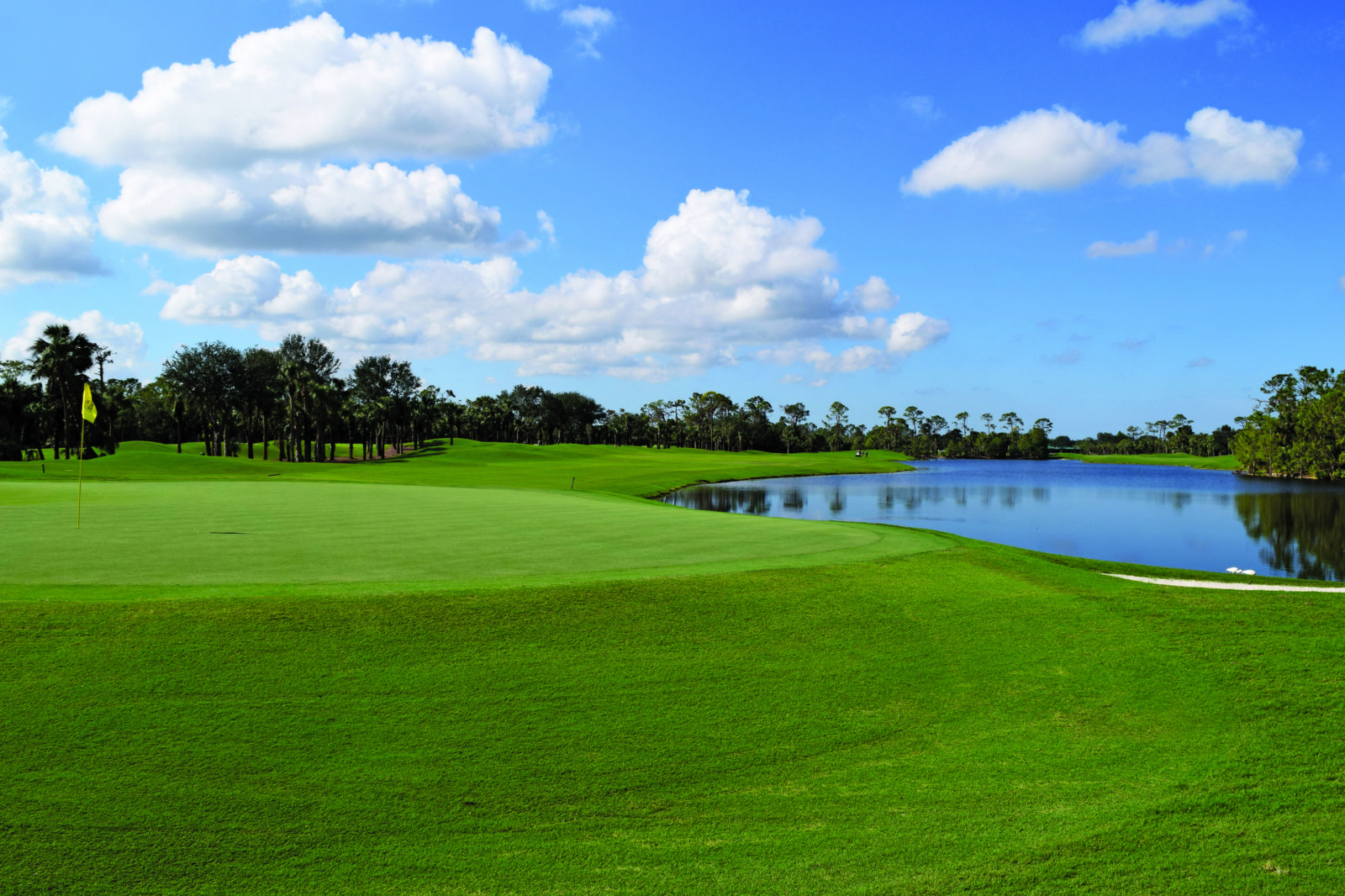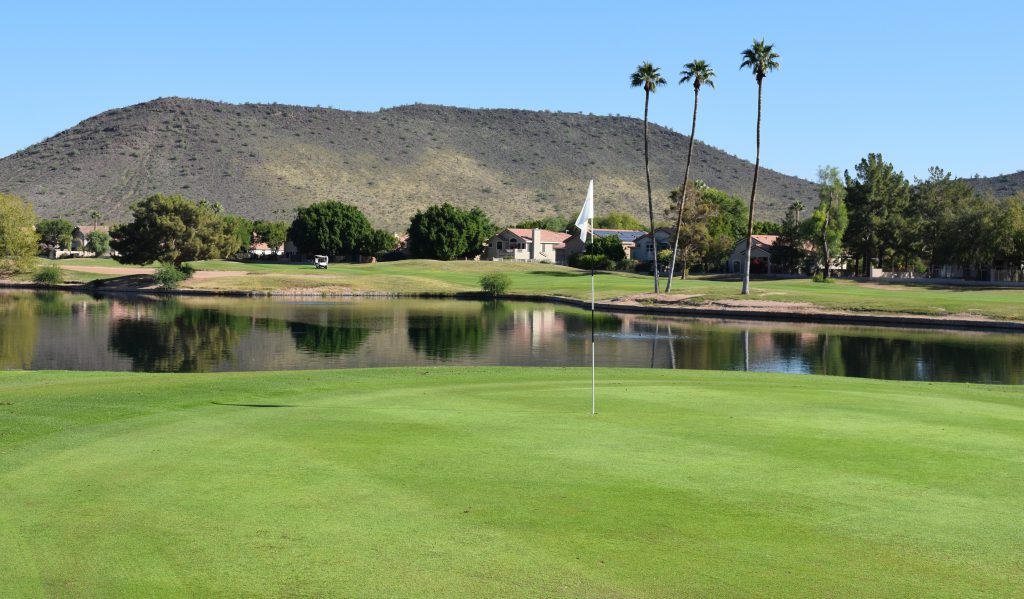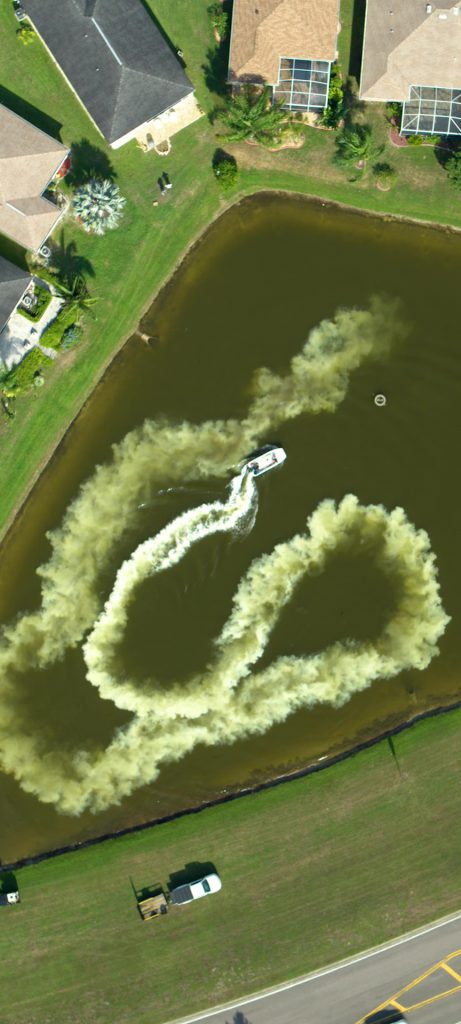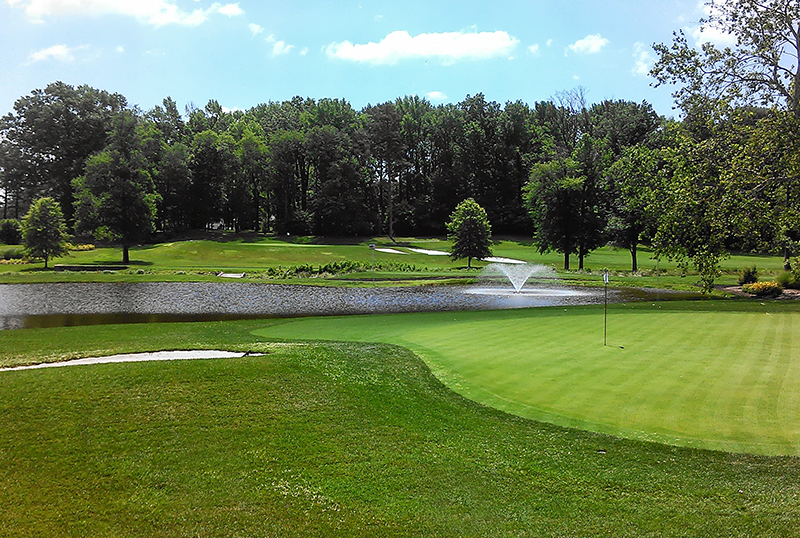

Fertilization: Turf Practices and Your Pond
Landscaping practices often cause significant impacts on the long-term water quality and algae and aquatic weed growth within a pond. Buffer management, debris falling into the pond, and poorly managed fertilizer applications are some of the practices that contribute to problems in ponds. Excessive application of fertilizer will allow for more nutrient runoff to enter the pond, creating a source of food for algae.
Natural watersheds are greatly impacted by inflow from the developed and agricultural areas surrounding the waters. Algae growth in stormwater and irrigation ponds in urban areas are often directly correlated with high nutrient levels in the waters. Many lawn and turf care practices can contribute to phosphorous and nitrogen loading in the local watershed.

When applying fertilizer, you should make sure it is done responsibly to ensure that the product is utilized by the grass and not washed away. One of the first things that you should do is read the label on the product you are applying. The first of the three numbers lists the amount of nitrogen in the bag, the second is the amount of phosphorous, and the third lists the amount of potassium. A soil test at your local agricultural extension office can be performed to determine what fertilizer will work best for your grass. Phosphorous-free fertilizers work well on most greens. Phosphorous is often the growth-limiting nutrient for pond algae and when lower amounts of phosphorous are present, algae typically have a difficult time growing.
At one time, our industry promoted limiting the number of times lawns can be fertilized to prevent excess nutrients from getting into the watershed, but a recent study by the EPA shows that it is good to fertilizer your greens with multiple, small dose applications performed in the growing season. Thick, plush turfgrass, versus bare, eroded areas, will actually hold in nutrients and keep them from easily running off into your pond during the next rainstorm. Well-established greens will likely have a healthier root system and can easily uptake fertilizer and available nutrients. Lawn aeration will increase soil uptake and can help create a healthier-looking course.

Use the right equipment to apply fertilizer at the right rate, based on the soil test results. Industry experts recommend avoiding fertilizer applications within 15 to 20 feet of a waterbody. One of the most important things to remember is to prevent spills and overspreading of the product into drains or ditches that flow into ponds. Runoff is a major source of nutrient input for ponds and the added input from fertilizer will further degrade the water quality in your pond.
Also, when maintaining your lawn or golf course, keep grass clippings and other debris from entering the nearby waterbody. This will also add extra nutrients to the pond, causing nuisance algae and aquatic weed growth. Using responsible practices as part of your nutrient management plan will not only be beneficial for your greens, but also will prevent long term pond problems.
Algae & Aquatic Weed Control
Contact the Experts to Discuss Your Ferritization Plan
SOLitude Lake Management is a nationwide environmental firm committed to providing sustainable solutions that improve water quality, enhance beauty, preserve natural resources and reduce our environmental footprint. SOLitude’s team of aquatic resource management professionals specializes in the development and execution of customized lake, stormwater pond, wetland and fisheries management programs that include water quality testing and restoration, nutrient remediation, algae and aquatic weed control, installation and maintenance of fountains and aeration systems, bathymetry, shoreline erosion restoration, mechanical harvesting and hydro-raking, lake vegetation studies, biological assessments, habitat evaluations and invasive species management. Services and educational resources are available to clients nationwide, including homeowners associations, multi-family and apartment communities, golf courses, commercial developments, ranches, private landowners, reservoirs, recreational and public lakes, municipalities, drinking water authorities, parks, and state and federal agencies. SOLitude Lake Management is a proud member of the Rentokil Steritech family of companies in North America.









